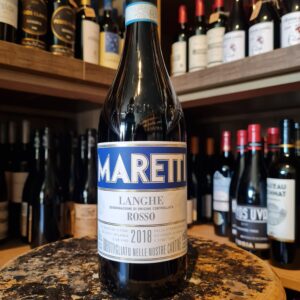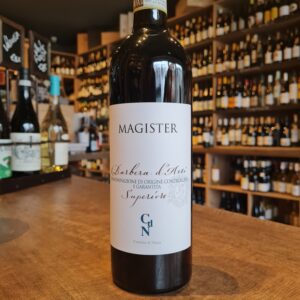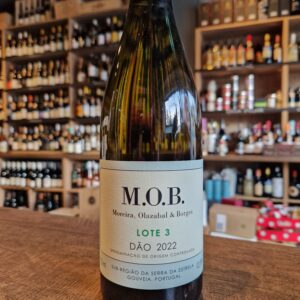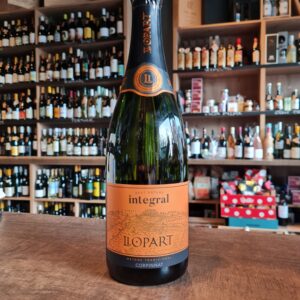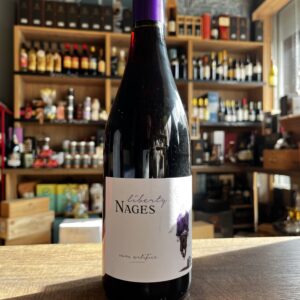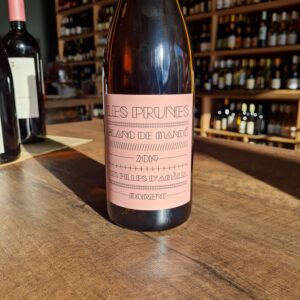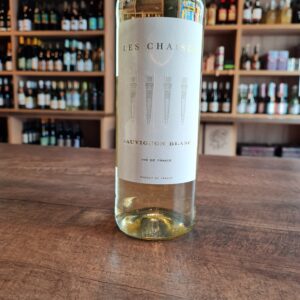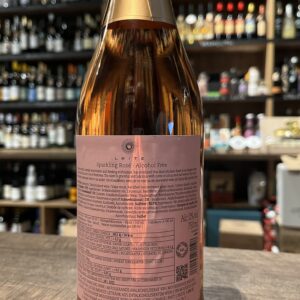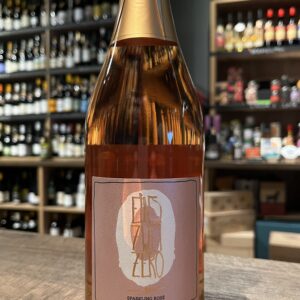-
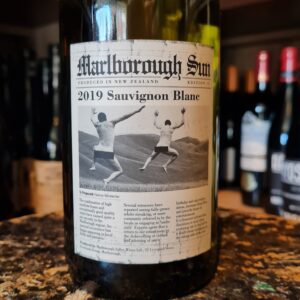 Fantastic New Zealand Sauvignon that will tick all the boxes. The extraordinary label of this wine and the bright recognizable taste have created a direct connection between the Marlborough Sun brand and consumers all over the world. With the growing popularity of Marlborough Valley wines, Saint Clair conceived the idea of creating an affordable, non-pompous wine aimed at attracting new consumers who are not fans of the drink. The progressive technologies of winemaking of the New World, the peculiarities of the terroir of the valley, the varieties that have proven themselves most successfully in the local microclimate and the human factor, have found their reflection in the wines of Marlborough Sun. The inspiration for the labels came from a newspaper article about an unusual phenomenon that has swept the region. It is recommended to serve chilled to a temperature of 8-10 degrees, as a supplement to vegetarian dishes, as well as salmon and tuna.
Fantastic New Zealand Sauvignon that will tick all the boxes. The extraordinary label of this wine and the bright recognizable taste have created a direct connection between the Marlborough Sun brand and consumers all over the world. With the growing popularity of Marlborough Valley wines, Saint Clair conceived the idea of creating an affordable, non-pompous wine aimed at attracting new consumers who are not fans of the drink. The progressive technologies of winemaking of the New World, the peculiarities of the terroir of the valley, the varieties that have proven themselves most successfully in the local microclimate and the human factor, have found their reflection in the wines of Marlborough Sun. The inspiration for the labels came from a newspaper article about an unusual phenomenon that has swept the region. It is recommended to serve chilled to a temperature of 8-10 degrees, as a supplement to vegetarian dishes, as well as salmon and tuna. -
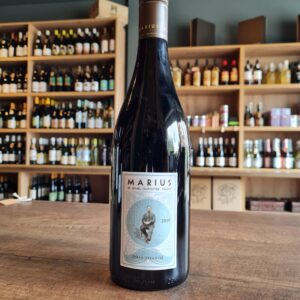 Michel Chapoutier created these wines to honor his great grandfather, Marius Chapoutier. Marius once said, “A good wine is one that beckons us to take another sip” and that is what Michel has accomplished with these wines. Marius Red is a wine that combines power, complexity and elegance. The Syrah endows it with warmth, robustness and a lovely bluish red hue. The Grenache brings a natural sweetness, balancing the whole structure of the wine. The harvest is done during the day: the natural summer heat by the beginning of the autumn is a great benefit for the maturity of the wine. The complexity, the elegance and the gourmet touch of Marius rouge are then revealed by their wine blending know-how. Serve it as an aperitif or with chicken liver on toast, beef carpaccio, roasted vegetables, lamb kebabs, veal, swordfish steak or goat cheese and dark chocolate at the end of the meal. Salut Marius!
Michel Chapoutier created these wines to honor his great grandfather, Marius Chapoutier. Marius once said, “A good wine is one that beckons us to take another sip” and that is what Michel has accomplished with these wines. Marius Red is a wine that combines power, complexity and elegance. The Syrah endows it with warmth, robustness and a lovely bluish red hue. The Grenache brings a natural sweetness, balancing the whole structure of the wine. The harvest is done during the day: the natural summer heat by the beginning of the autumn is a great benefit for the maturity of the wine. The complexity, the elegance and the gourmet touch of Marius rouge are then revealed by their wine blending know-how. Serve it as an aperitif or with chicken liver on toast, beef carpaccio, roasted vegetables, lamb kebabs, veal, swordfish steak or goat cheese and dark chocolate at the end of the meal. Salut Marius! -
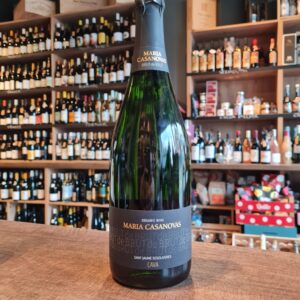 The Bodega or Cava Maria Casanovas is located in the heart of the Penedès, in Sant Sadurní d'Anoia, the centre of Cava production. It is owned by the Casanovas family and managed by three children of Maria Casanovas. Jordi and Jacint are responsible for the vineyards and the cellar, Rosa for administration and marketing. Maria Casanovas' parents were already grape growers and sold their produce to the large cava wineries. Cava has been produced under their own name since 1984. 13 hectares are owned and planted with the local grape varieties Xarel-lo, Parellada and Macabeo (Viura) as well as the international varieties Pinot Noir and Chardonnay. Maria Casanovas was one of the pioneers who introduced Pinot Noir to Penedès. Fossils can be found occasionally in the calcareous, gravelly clay soils. Food pairing suggestion: Apéro pastries, Tagliatelle al tartufo, Vegetable pie, Salad with vegetables, pulses, pasta
The Bodega or Cava Maria Casanovas is located in the heart of the Penedès, in Sant Sadurní d'Anoia, the centre of Cava production. It is owned by the Casanovas family and managed by three children of Maria Casanovas. Jordi and Jacint are responsible for the vineyards and the cellar, Rosa for administration and marketing. Maria Casanovas' parents were already grape growers and sold their produce to the large cava wineries. Cava has been produced under their own name since 1984. 13 hectares are owned and planted with the local grape varieties Xarel-lo, Parellada and Macabeo (Viura) as well as the international varieties Pinot Noir and Chardonnay. Maria Casanovas was one of the pioneers who introduced Pinot Noir to Penedès. Fossils can be found occasionally in the calcareous, gravelly clay soils. Food pairing suggestion: Apéro pastries, Tagliatelle al tartufo, Vegetable pie, Salad with vegetables, pulses, pasta -
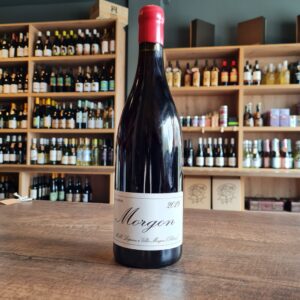 Domaine Marcel Lapierre Morgon is a natural red wine made by Domaine Marcel Lapierre with the Gamay variety in the AOC Morgon (Burgundy). Domaine Marcel Lapierre is one of the pioneer wineries that has been making natural wines since Marcel Lapierre, a true pacesetter among Beaujolais producers, took over the Villié-Morgon estate in 1973. With his work philosophy, he was committed to combining traditional best practices with new technologies so that his wines would be a true reflection of the landscape. In 1981, under the strong influence of natural wine master Jules Chavet, Marcel was among the first to produce wines of minimal intervention, without adding SO2 or any other substance. Domaine Marcel Lapierre Morgon 2018 is a fruity red wine with aromas of cherry, violet and liquorice, covered with a forest freshness and refreshing balsamic tones. On the palate it is structured, fresh and sweet. It begins with a sharp acidity that blends with the touches of fruit and liquorice and the intense minerality. This is a refreshing red, perfect for spring and summer; recommended to drink with charcuterie, paté, cheese, roast ham, roast lamb, roast chicken and turkey and with spicy Thai and Chinese dishes. Serve at the lower end of the suggested temperature range if you like your light red wines served cooler like the French
Domaine Marcel Lapierre Morgon is a natural red wine made by Domaine Marcel Lapierre with the Gamay variety in the AOC Morgon (Burgundy). Domaine Marcel Lapierre is one of the pioneer wineries that has been making natural wines since Marcel Lapierre, a true pacesetter among Beaujolais producers, took over the Villié-Morgon estate in 1973. With his work philosophy, he was committed to combining traditional best practices with new technologies so that his wines would be a true reflection of the landscape. In 1981, under the strong influence of natural wine master Jules Chavet, Marcel was among the first to produce wines of minimal intervention, without adding SO2 or any other substance. Domaine Marcel Lapierre Morgon 2018 is a fruity red wine with aromas of cherry, violet and liquorice, covered with a forest freshness and refreshing balsamic tones. On the palate it is structured, fresh and sweet. It begins with a sharp acidity that blends with the touches of fruit and liquorice and the intense minerality. This is a refreshing red, perfect for spring and summer; recommended to drink with charcuterie, paté, cheese, roast ham, roast lamb, roast chicken and turkey and with spicy Thai and Chinese dishes. Serve at the lower end of the suggested temperature range if you like your light red wines served cooler like the French -
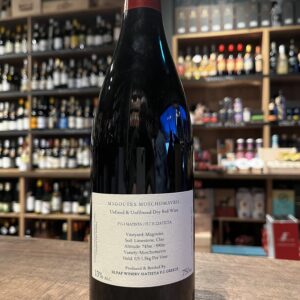
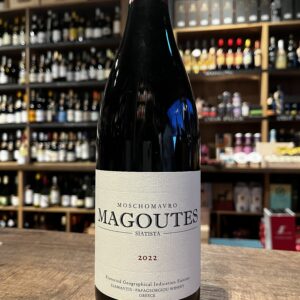 Magoutes winery, run by Dimitris Diamantis, is located in the old but forgotten region of Siatista in the mountains of northern Greece. Here vineyards have been abandoned and then revived centuries ago. The city of Siatista is nestled on the slopes of Mount Siniatsiko. The soils of the vineyards are limestone-based which adds elegance and acidity to this ruby-hued red wine. Moshomavro means 'black muscat' but is no relation in parentage or flavour! Lovers of of Beaujolais or Italian reds like pelaverga, rossesse or schiava will find a lot to appreciate in moschómavro, a variety historically interplanted with xinómavro and others in the western Macedonian mountains. Make sure to open this well in advance to get the full show, as a couple of hours of air will bring out its best qualities. It’s the ideal wine to pair with a cheese and meat board or fish. It’s also lovely with a slight chill on a warm day.
Magoutes winery, run by Dimitris Diamantis, is located in the old but forgotten region of Siatista in the mountains of northern Greece. Here vineyards have been abandoned and then revived centuries ago. The city of Siatista is nestled on the slopes of Mount Siniatsiko. The soils of the vineyards are limestone-based which adds elegance and acidity to this ruby-hued red wine. Moshomavro means 'black muscat' but is no relation in parentage or flavour! Lovers of of Beaujolais or Italian reds like pelaverga, rossesse or schiava will find a lot to appreciate in moschómavro, a variety historically interplanted with xinómavro and others in the western Macedonian mountains. Make sure to open this well in advance to get the full show, as a couple of hours of air will bring out its best qualities. It’s the ideal wine to pair with a cheese and meat board or fish. It’s also lovely with a slight chill on a warm day. -
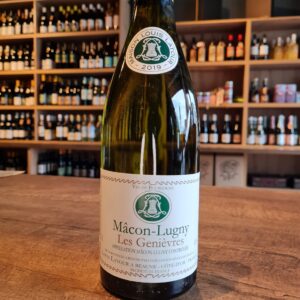 This Macon Lugny Les Genièvres has beautiful aromas of white fruit, muscat, as well as some peppery notes. This is a delicious wine with a round and full mouth(unoaked), it shows distinctive aromas of white fruit, laced with floral notes. Ideal with grilled fish, seafood and Comté cheese. The village of Lugny is located high up in the South of the Mâcon region. It has a great reputation for its white wines which has made Mâcon famous. It is well known that the village of Lugny, with its limestone soils and warm climate, produces the most coveted white wines of the region. The vineyard of « Les Genièvres » is one of the best. Maison Louis Latour selects the best grapes of this village, which thanks to its terroir, was the only village planted with Chardonnay 30 years ago.
This Macon Lugny Les Genièvres has beautiful aromas of white fruit, muscat, as well as some peppery notes. This is a delicious wine with a round and full mouth(unoaked), it shows distinctive aromas of white fruit, laced with floral notes. Ideal with grilled fish, seafood and Comté cheese. The village of Lugny is located high up in the South of the Mâcon region. It has a great reputation for its white wines which has made Mâcon famous. It is well known that the village of Lugny, with its limestone soils and warm climate, produces the most coveted white wines of the region. The vineyard of « Les Genièvres » is one of the best. Maison Louis Latour selects the best grapes of this village, which thanks to its terroir, was the only village planted with Chardonnay 30 years ago. -
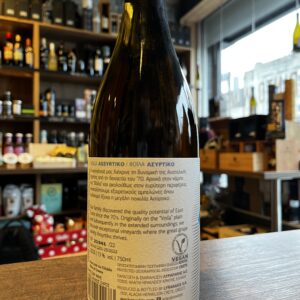
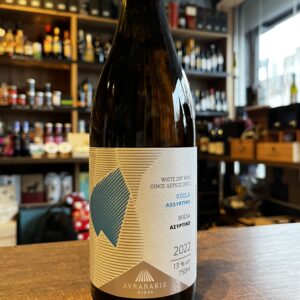 Anyone that has been to Greece or has interest in wines have come by the grape Assyrtiko . In the last few years, wines from Greece, in particularly this indigenous grape, have gotten the status as a world-class wine and prices have begun to rise especially from the Santorini region. This Vegan Assyrtiko from the Lyrarakis estate is one of them and it is still in the affordable range and fortunately, your everyday Assyrtiko needs can still be catered for. Being from east Crete rather than Santorini means prices are still competitive. Think down the lines of getting a wine from the Touraine region rather than the heart of the Loire Valley. Lyrarakis on Crete are a brilliant winery with a focus on indigenous Greek varieties. Their rendition of Assyrtiko is broader and more approachable than some of the tightly-wound examples on Santorini, but it's no less drinkable for that. It is in fact an ideal place to grow the white grape Assyrtiko. Both the Mediterranean breezes and the altitude of the Lyrarakis vineyards allows the grapes to have a much longer ripening period, preserving the grapes aromatics and acidity resulting in a wine with wonderful floral freshness, crisp citrus notes and a delicate mineral finish. Yamas!
Anyone that has been to Greece or has interest in wines have come by the grape Assyrtiko . In the last few years, wines from Greece, in particularly this indigenous grape, have gotten the status as a world-class wine and prices have begun to rise especially from the Santorini region. This Vegan Assyrtiko from the Lyrarakis estate is one of them and it is still in the affordable range and fortunately, your everyday Assyrtiko needs can still be catered for. Being from east Crete rather than Santorini means prices are still competitive. Think down the lines of getting a wine from the Touraine region rather than the heart of the Loire Valley. Lyrarakis on Crete are a brilliant winery with a focus on indigenous Greek varieties. Their rendition of Assyrtiko is broader and more approachable than some of the tightly-wound examples on Santorini, but it's no less drinkable for that. It is in fact an ideal place to grow the white grape Assyrtiko. Both the Mediterranean breezes and the altitude of the Lyrarakis vineyards allows the grapes to have a much longer ripening period, preserving the grapes aromatics and acidity resulting in a wine with wonderful floral freshness, crisp citrus notes and a delicate mineral finish. Yamas! -
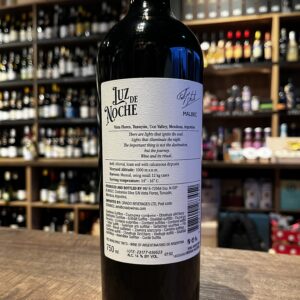
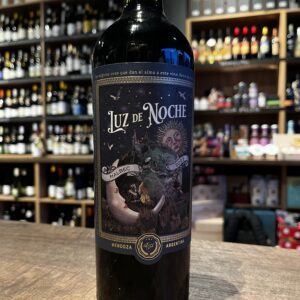 The revered Argentinian musician-Filipe Staiti- and owner of this beautiful winery situated in the Iconic wine region Tupungato-Mendoza told me to add the following to wine page: There are lights that ignite the soul. Lights that illuminate the night. The important thing is not the destination, but the journey. Wine and its ritual... Sounds better in Spanish, trust me! As for the wine In case you didn't know Luz de Noche translates to english as “Light of the Night”. In fact, harvest takes place during the night in the month of March, hence really the name of wine. Ideal for pasta with tomato or Bolognese sauce, pizza and meats
The revered Argentinian musician-Filipe Staiti- and owner of this beautiful winery situated in the Iconic wine region Tupungato-Mendoza told me to add the following to wine page: There are lights that ignite the soul. Lights that illuminate the night. The important thing is not the destination, but the journey. Wine and its ritual... Sounds better in Spanish, trust me! As for the wine In case you didn't know Luz de Noche translates to english as “Light of the Night”. In fact, harvest takes place during the night in the month of March, hence really the name of wine. Ideal for pasta with tomato or Bolognese sauce, pizza and meats -
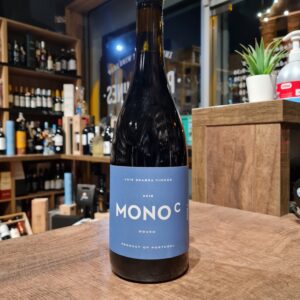 Luis Seabra is a producer that is at the forefront of the “new Douro” movement. Rather than making table wines that are, for all intents and purposes, “Little Ports,” Luis has taken a more balanced, restrained approach to winemaking in the oldest demarcated wine region in the world. His guiding principles are showcasing terroir and nuance above power and extraction. Bright, mineral driven and elegant, Luis’ wines are typically exposés of soil type. With the Mono C, he is taking a look at a particular variety – in this case, Castelão. While Castelão is a grape that is typically found further south in Portugal, Luis has found a mono-planted plot of the light-skinned grape in the Douro and is working his magic to craft a wine of unparalleled delicacy and elegance. Would pair it with charcuterie, grilled pork dishes, roasted poultry
Luis Seabra is a producer that is at the forefront of the “new Douro” movement. Rather than making table wines that are, for all intents and purposes, “Little Ports,” Luis has taken a more balanced, restrained approach to winemaking in the oldest demarcated wine region in the world. His guiding principles are showcasing terroir and nuance above power and extraction. Bright, mineral driven and elegant, Luis’ wines are typically exposés of soil type. With the Mono C, he is taking a look at a particular variety – in this case, Castelão. While Castelão is a grape that is typically found further south in Portugal, Luis has found a mono-planted plot of the light-skinned grape in the Douro and is working his magic to craft a wine of unparalleled delicacy and elegance. Would pair it with charcuterie, grilled pork dishes, roasted poultry -
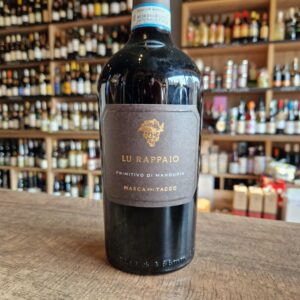 Primitivo is practically synonymous with Puglia and the south of Italy. If you truly want to experience the quality of a fine Primitivo di Manduria, try this wine. It must be said that the Primitivo di Manduria is slightly different from the rest of Puglia. Manduria has a privileged location, right in the middle of the Salento peninsula.This allows the marine breeze coming from both the Adriatic Sea and the Ionian Sea to refresh the vineyard. The soil is composed of limestone with iron oxide fossils, giving it a distinctive red color. This soil is also known as Terra Rossa and it is typical of the Mediterranean region.The climate is ideal too, with mild winters and extremely hot summers and according to Decanter, "Primitivo is the most sun-loving grape I have seen." It goes well with dark and white meat from the grill or from the oven. Also a pleasant red wine with pasta dishes with spicy sauces as well as spicy cheeses. Its elegance and structure make it a perfect wine for romantic evenings or important dinners
Primitivo is practically synonymous with Puglia and the south of Italy. If you truly want to experience the quality of a fine Primitivo di Manduria, try this wine. It must be said that the Primitivo di Manduria is slightly different from the rest of Puglia. Manduria has a privileged location, right in the middle of the Salento peninsula.This allows the marine breeze coming from both the Adriatic Sea and the Ionian Sea to refresh the vineyard. The soil is composed of limestone with iron oxide fossils, giving it a distinctive red color. This soil is also known as Terra Rossa and it is typical of the Mediterranean region.The climate is ideal too, with mild winters and extremely hot summers and according to Decanter, "Primitivo is the most sun-loving grape I have seen." It goes well with dark and white meat from the grill or from the oven. Also a pleasant red wine with pasta dishes with spicy sauces as well as spicy cheeses. Its elegance and structure make it a perfect wine for romantic evenings or important dinners -
 These fresh and lovely whites were carefully chosen to make you travel through different parts of the world in comfort with a glass in hand. These are fresh, light, crispy, open wines that are super delicious and will test your taste buds and impress. Ferdinand Mayr Grüner Veltliner- Ferdinand Mayr is a musician turned winemaker and his organic wines are singing with flavour and intensity. Whoever says Grüner Veltliner says Austria and vice versa. This version of Ferdinand Mayr is accessible and it charms you right away. Exuberant, lively nose of citrus, apple and white pepper. On the palate, the ripe fruit and spiciness create a pleasant tension with the acidity. Crispy and ripe, as if you were biting into a juicy apple. Flavor and spiciness characterize this wine. Fantastic with Japanese or Thai cuisine. Portuga White Lisboa- A wine that presents itself as modern, with excellent aromatic intensity and offering citric fruit notes. With a light body, it has also a great natural freshness and shows great balance in the aftertaste. Antonio Rubini Pinot Grigio delle Venezie- Italian Pinot Grigio through and through with no surprises. This wine shows apple and pear with hints of white peach and elderflower. Light and refreshing, a mouth-watering partner for salads and seafood. Great any day of the week. Les Chaises Sauvignon Blanc- Another one that won't disappoint. This is a Languedoc Roussillon white made for the locals in South West France. Delicious, fresh zesty lemon and green apple flavours, lively and refreshing with good length. Ideal as an aperitif, with seafood, white meats, goats cheese and salads. Marlborough Sun Sauvignon Blanc- This absolutely stunning New Zealand white is what you expect from a sauvignon blanc from Marlborough and more. The inspiration for the labels came from a newspaper article about an unusual phenomenon that has swept the region... Pioneri Mundi Albariño- If you are a fan of Spanish Albariños, this one just ticks the box. Fantastic, all rounder and easy to drink, perfect for any occasion. Compliments all sorts of food, especially Tapas.
These fresh and lovely whites were carefully chosen to make you travel through different parts of the world in comfort with a glass in hand. These are fresh, light, crispy, open wines that are super delicious and will test your taste buds and impress. Ferdinand Mayr Grüner Veltliner- Ferdinand Mayr is a musician turned winemaker and his organic wines are singing with flavour and intensity. Whoever says Grüner Veltliner says Austria and vice versa. This version of Ferdinand Mayr is accessible and it charms you right away. Exuberant, lively nose of citrus, apple and white pepper. On the palate, the ripe fruit and spiciness create a pleasant tension with the acidity. Crispy and ripe, as if you were biting into a juicy apple. Flavor and spiciness characterize this wine. Fantastic with Japanese or Thai cuisine. Portuga White Lisboa- A wine that presents itself as modern, with excellent aromatic intensity and offering citric fruit notes. With a light body, it has also a great natural freshness and shows great balance in the aftertaste. Antonio Rubini Pinot Grigio delle Venezie- Italian Pinot Grigio through and through with no surprises. This wine shows apple and pear with hints of white peach and elderflower. Light and refreshing, a mouth-watering partner for salads and seafood. Great any day of the week. Les Chaises Sauvignon Blanc- Another one that won't disappoint. This is a Languedoc Roussillon white made for the locals in South West France. Delicious, fresh zesty lemon and green apple flavours, lively and refreshing with good length. Ideal as an aperitif, with seafood, white meats, goats cheese and salads. Marlborough Sun Sauvignon Blanc- This absolutely stunning New Zealand white is what you expect from a sauvignon blanc from Marlborough and more. The inspiration for the labels came from a newspaper article about an unusual phenomenon that has swept the region... Pioneri Mundi Albariño- If you are a fan of Spanish Albariños, this one just ticks the box. Fantastic, all rounder and easy to drink, perfect for any occasion. Compliments all sorts of food, especially Tapas. -
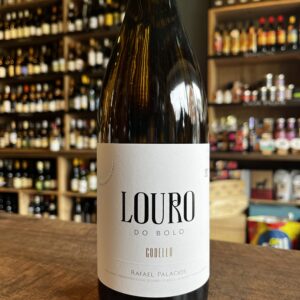 The best white wines of Spain are made of Godello from the region Valdeorras in Galicia. More and more this wine is can be seen in many wine lists across Ireland as its increasing popularity is par to the Albarino from Rias baixas or the Rueda's Verdejo. Rafael Palacios the maker of this wine comes from something of a winemaking dynasty. His father, uncle and brother are all highly regarded winemakers across Rioja, Priorat and other parts of the country. Rafael himself cut his teeth working on his father's Rioja estate, prior to training and working in Bordeaux and Coonawarra, South Australia. Rafa started this project in 2004 in the then little known region of Valdeorras, home of a few ancient plots of Godello vines. This grape variety was virtually extinct in Spain but Rafa and a few others realised its potential and extensive replanting of the variety began. The Louro is crafted from younger vines but is selected from plots that produce more age-worthy wines. Fermented with indigenous yeast and aged in used foudre, Louro showcases Rafa’s talent at balancing the minerality of the grape with the richness and texture of the élevage. Pair it with baked whitefish, bluefish, fish and vegetables, grilled fish, grilled whitefish, pasta with fish, poultry, rice with fish, roasted fish, roasted foods.
The best white wines of Spain are made of Godello from the region Valdeorras in Galicia. More and more this wine is can be seen in many wine lists across Ireland as its increasing popularity is par to the Albarino from Rias baixas or the Rueda's Verdejo. Rafael Palacios the maker of this wine comes from something of a winemaking dynasty. His father, uncle and brother are all highly regarded winemakers across Rioja, Priorat and other parts of the country. Rafael himself cut his teeth working on his father's Rioja estate, prior to training and working in Bordeaux and Coonawarra, South Australia. Rafa started this project in 2004 in the then little known region of Valdeorras, home of a few ancient plots of Godello vines. This grape variety was virtually extinct in Spain but Rafa and a few others realised its potential and extensive replanting of the variety began. The Louro is crafted from younger vines but is selected from plots that produce more age-worthy wines. Fermented with indigenous yeast and aged in used foudre, Louro showcases Rafa’s talent at balancing the minerality of the grape with the richness and texture of the élevage. Pair it with baked whitefish, bluefish, fish and vegetables, grilled fish, grilled whitefish, pasta with fish, poultry, rice with fish, roasted fish, roasted foods. -
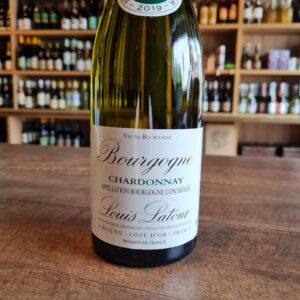 The result of a long history, Burgundy and its wines are known worldwide. Chardonnay being a native grape to the area, perfectly matches the terroir of Burgundy: poor soils or calcareous marl, perfect exposure but a temperate climate. As a result the sugar content can reach a high level whilst maintaining a balance of fruit and acidity. Thanks to a careful selection, Maison Louis Latour is able to produce a rich and expressive Chardonnay. This wine is intense, powerful and fruity. A complexe wine with a nice aromatic persistence. Food Pairing, aperitif - shellfish - charcuterie - grilled fish
The result of a long history, Burgundy and its wines are known worldwide. Chardonnay being a native grape to the area, perfectly matches the terroir of Burgundy: poor soils or calcareous marl, perfect exposure but a temperate climate. As a result the sugar content can reach a high level whilst maintaining a balance of fruit and acidity. Thanks to a careful selection, Maison Louis Latour is able to produce a rich and expressive Chardonnay. This wine is intense, powerful and fruity. A complexe wine with a nice aromatic persistence. Food Pairing, aperitif - shellfish - charcuterie - grilled fish -
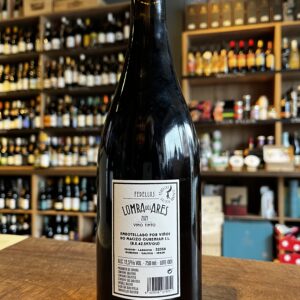
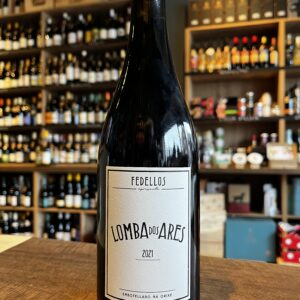 Lomba dos Ares is a Spanish take on Beaujolais, a blend of native grapes - Mencía, Mouratón, Garnacha Tintorera, Caiño and Bastardo - that captures the essence of Ribeira Sacra with a perfumed nose and plenty of freshness and finesse on the palate. It's not surprising that beautiful places like this produce soulful wines. Red fruits, orange peel, violets and cedar come in layers making this delicious to sip solo but also very versatile with charcuterie, roasted vegetable or pork dishes.
Lomba dos Ares is a Spanish take on Beaujolais, a blend of native grapes - Mencía, Mouratón, Garnacha Tintorera, Caiño and Bastardo - that captures the essence of Ribeira Sacra with a perfumed nose and plenty of freshness and finesse on the palate. It's not surprising that beautiful places like this produce soulful wines. Red fruits, orange peel, violets and cedar come in layers making this delicious to sip solo but also very versatile with charcuterie, roasted vegetable or pork dishes. -
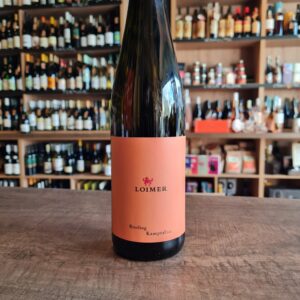 The Loimer estate is located around Langenlois in the sunny Kamptal region of Lower Austria, to the northwest of Vienna. Unlike many Austrian producers who go for a rich, sweet Alsace style, Fred Loimer obtains full ripeness in the vineyard yet ferments to dryness. The resulting wines (like the Loimer Riesling) display his trademark definition, zest and balance on the palate. Fred Loimer realised very early on that his future lay in wine, after his father converted the family farm into a winery. He attended Austria’s renowned Klosterneuburg University and later gained important experience at wineries in Nahe, Germany and in Napa Valley, California. On his return to Langenlois, Fred introduced new methods in the vineyards and winery, with the aim of continually improving the quality of the wine. In 1997, Fred took over the winery from his father and, in 1998, purchased and renovated a historical vaulted brick cellar (a former cellar of the Haindorf Castle) amidst the vines between Langenlois and Zöbing. The wines have been vinified and stored here since 1999. The 60 hectares of vineyards are divided into 100 parcels, planted on seven different soil types (ranging from loess, gravel, clay, sand and slate to Gföhler gneiss, a coarse-grained, metamorphic rock containing quartz, felspar and mica), which bring great complexity to the wines. There is no need to say that the high quality of their soils is crucial for the Loimer Riesling and its minerality. Situated at an altitude of 200-420m above sea level, the south facing vineyards benefit from warm days and cool nights, which encourage the development of the aromatic components in the grapes. The high summer temperatures are mitigated by the River Danube and the Waldviertel (forested area), while the well drained soils mean the vines can form deeply penetrating root systems, thus overcoming even long periods of drought without damage. Since 2006, the vineyard and cellar work has been conducted according to biodynamic principles.
The Loimer estate is located around Langenlois in the sunny Kamptal region of Lower Austria, to the northwest of Vienna. Unlike many Austrian producers who go for a rich, sweet Alsace style, Fred Loimer obtains full ripeness in the vineyard yet ferments to dryness. The resulting wines (like the Loimer Riesling) display his trademark definition, zest and balance on the palate. Fred Loimer realised very early on that his future lay in wine, after his father converted the family farm into a winery. He attended Austria’s renowned Klosterneuburg University and later gained important experience at wineries in Nahe, Germany and in Napa Valley, California. On his return to Langenlois, Fred introduced new methods in the vineyards and winery, with the aim of continually improving the quality of the wine. In 1997, Fred took over the winery from his father and, in 1998, purchased and renovated a historical vaulted brick cellar (a former cellar of the Haindorf Castle) amidst the vines between Langenlois and Zöbing. The wines have been vinified and stored here since 1999. The 60 hectares of vineyards are divided into 100 parcels, planted on seven different soil types (ranging from loess, gravel, clay, sand and slate to Gföhler gneiss, a coarse-grained, metamorphic rock containing quartz, felspar and mica), which bring great complexity to the wines. There is no need to say that the high quality of their soils is crucial for the Loimer Riesling and its minerality. Situated at an altitude of 200-420m above sea level, the south facing vineyards benefit from warm days and cool nights, which encourage the development of the aromatic components in the grapes. The high summer temperatures are mitigated by the River Danube and the Waldviertel (forested area), while the well drained soils mean the vines can form deeply penetrating root systems, thus overcoming even long periods of drought without damage. Since 2006, the vineyard and cellar work has been conducted according to biodynamic principles. -
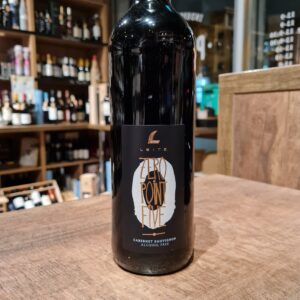 Eins-Zwei-Zero is a premium range of non-alcoholic wines created by award-winning winemaker Johannes Leitz. Using 100% Cabernet Sauvignon grapes from Argentina, these wines are produced with great attention to detail. The alcohol is removed through gentle vacuum distillation at low temperatures, allowing the natural flavours and delicate aromas to be preserved.
Eins-Zwei-Zero is a premium range of non-alcoholic wines created by award-winning winemaker Johannes Leitz. Using 100% Cabernet Sauvignon grapes from Argentina, these wines are produced with great attention to detail. The alcohol is removed through gentle vacuum distillation at low temperatures, allowing the natural flavours and delicate aromas to be preserved.


